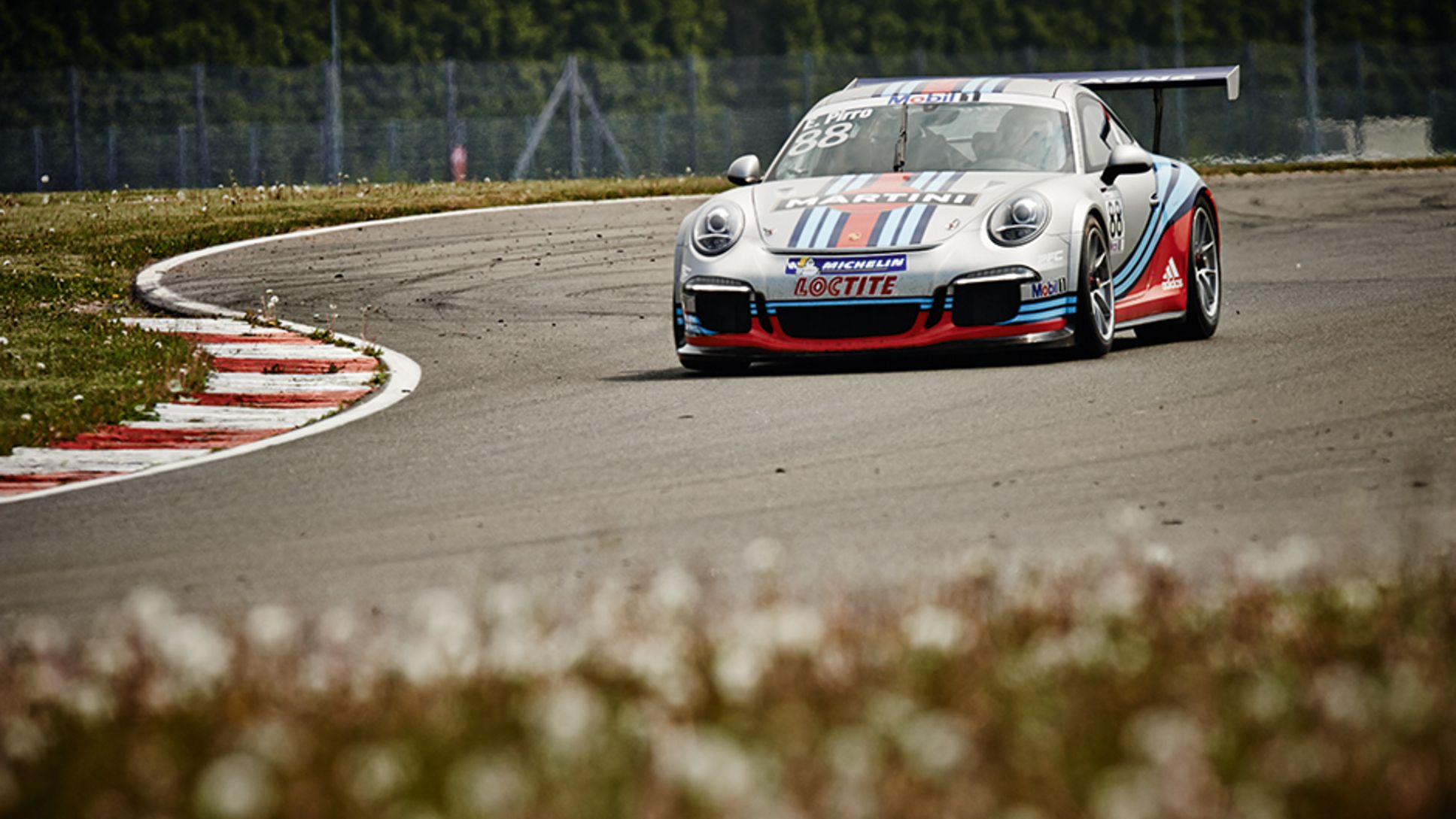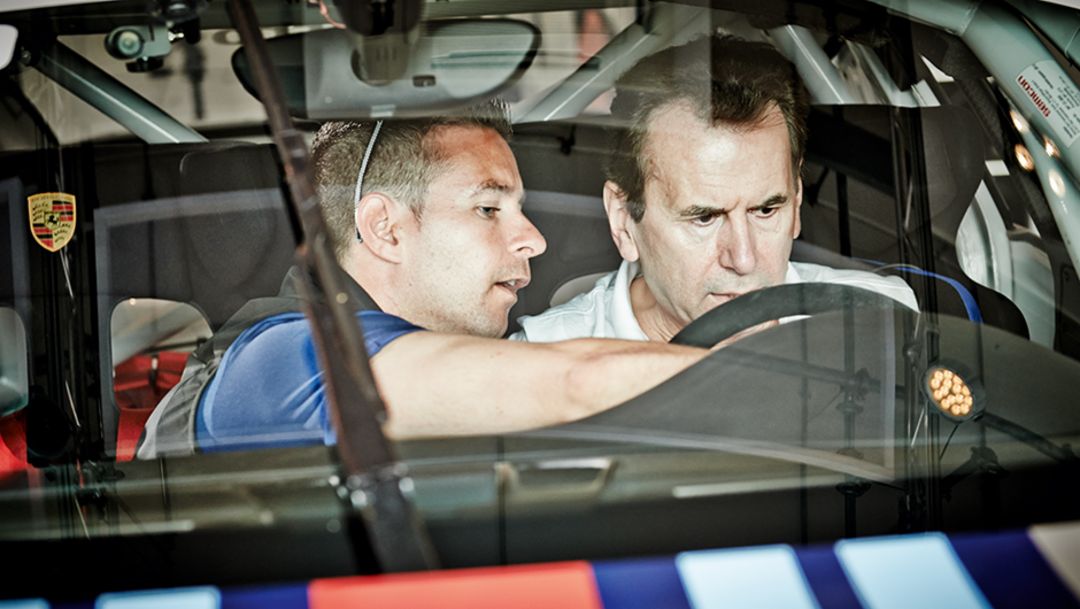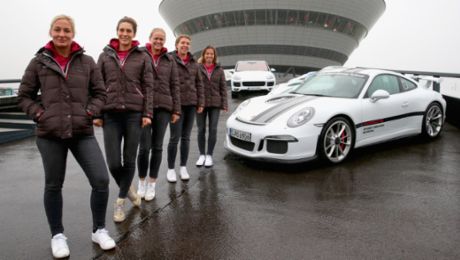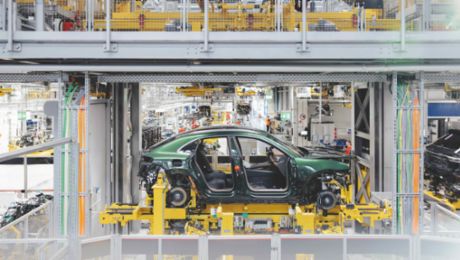The stillness heightens the tension. Wind blows softly over the grass. The Porsche Leipzig customer center reaches up into the sky like a diamond. Then instructor Manuel Lauck presses the start button on the Porsche 911 GT3 Cup car—and the sound of its 3.8-liter boxer engine awakens the driver’s inner racer with an adrenaline rush. That’s what’s happening to Karlheinz Blessing: a manager turns into a racer.
Away from the racetrack, Blessing (57) is the CEO of Dillinger Hüttenwerke, a steel-producing company in the German Saarland with a history of over three hundred years, and of Saarstahl AG. He studied economics in Constance and earned his doctorate there as well. He is at home with numbers. That fits in well with lap times.
For two years now, Blessing has been entering the Porsche Sports Cup with his own 911 GT2. As he puts it, “Racing is a complex system, where I push my limits and have to really concentrate my focus. Those are precisely the skills I need as a manager. Racing is helpful to me in this respect.”
Premium on performance
Blessing is someone who places a premium on performance, in his leisure activities as well as his professional life. Having attended numerous events held by the Porsche Sport Driving School, he is familiar with the Porsche test course, which can be driven in multiple combinations. But this time he is entering new territory. He booked the GT3 Cup Experience, an especially high-speed program, with a personal coach and a thoroughbred racing car, the likes of which are used in the Porsche Mobil 1 Supercup.
Blessing examines the 911 racer from a crouched position, with a respectful air. Instructor Lauck is on his knee beside him. Lauck has the résumé of a classic race-car driver. He started with karting, and then was successful in marque cups and endurance contests. In 2006, Porsche recruited the professional racer to be an instructor in Leipzig.
The program for the GT3 Cup Experience includes four drives of around 15 minutes each in a Cup car. A set part of the program, however, is that the student sits in the passenger seat for the first few laps. Lauck drives. Driving at full speed, the coach explains the controls, shift system, braking points, and ideal line. Then he pulls over at the pit.
Now, finally, the manager may climb into the driver’s seat. “Just drive at first, get used to it, and then we’ll do the fine-tuning,” says Lauck calmly. He knows about the rush of adrenaline.
“The car drives in such a playful, light way—I wouldn’t have expected that,” exclaims Blessing after the first trip. But the instructor warns him to be careful: “Without the little helpers, the Cup car drives differently than the standard 911.” Those “little helpers” are the ABS, traction control, and stability control—in other words, everything that provides additional safety to a sports car for everyday use. There’s none of that in the Cup racer, which weighs only 1,150 kilos.
During the breaks its time for the de-briefings and data analyses. The zigzag of the data diagrams is supplemented by video images from the onboard camera. “Look, you were quite consistent; the last two laps were just a tenth of a second apart,” says Lauck. This consistency on the ideal line distinguishes good racing drivers from those less skilled. Let’s go on to the next round!”
The 3.7-kilometer circuit in Leipzig meets all FIA regulations. It was designed by architect Hermann Tilke to meet international standards; his expertise is behind nearly all of the modern Formula One racing courses. Tilke combined famous curves from around the world—such as the Bus Stop chicane from Spa-Francorchamps and the Curve di Lesmo from Monza—into a fluid ensemble.
"It’s an awful lot of fun"
Blessing also had to get used to how the car starts up, because the clutch engages in only an extremely small range as it’s needed only to drive off and to put the gears into neutral when stopping. When driving, a light tug on the paddle switches on the steering wheel is all that is needed to change gears. Blessing can hardly contain himself. “Shifting with the paddles is just brilliant! And it’s an awful lot of fun.”
After Blessing’s final stint on the course the coach glances at the diagrams and gives him high marks. “Look, you’re perfect at braking. You were driving very consistently at the end and kept improving your lap times. That’s what we’re looking for.” Blessing is thrilled. “Everything is so much more immediate with this racing car. There’s nothing in between. If I pull hard on the steering wheel, the car responds. When I drive into a curve, I feel the speed of the curve in my whole body.”
But it’s enough for the moment. “You’ve got to deal with many new things all at once, and that takes a lot of effort,” remarks Karlheinz Blessing, the race-car driver.
Info
Text first published in the Porsche customer magazine Christophorus, No. 367.


.jpeg/jcr:content/MicrosoftTeams-image%20(4).jpeg)

